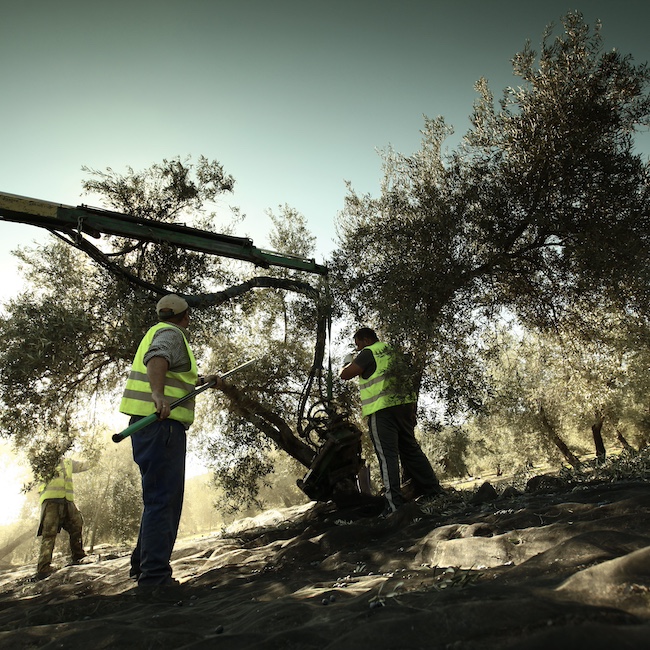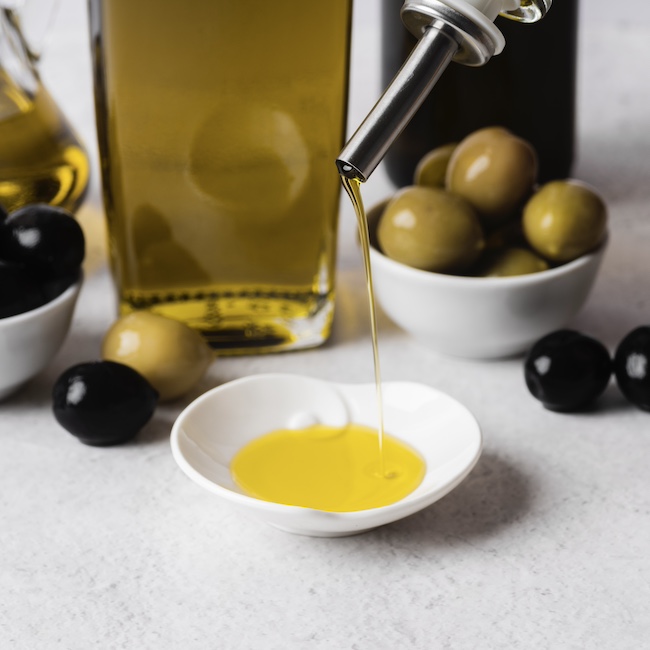by Alfonso J. Fernández, Olive oil jury member, blender & consultant
.png.transform/rendition-xs/image_image%20(1).png)
After a few years in which the harvest dropped by half in Spain, there is good news: the climate is providing some relief, and quantities are returning to usual levels while the (high) quality remains

by Alfonso J. Fernández, Olive oil jury member, blender & consultant
If you’re reading this, you probably know that Spain is by far the world's largest producer of olive oil. While global production fluctuates, Spain has consistently accounted for 50% of the world's supply. In fact, the reduced harvests over the past two years are the main reason you've been paying significantly more for your olive oil—no conspiracy theories needed.
Five years of drought and two years of extreme temperatures during the olive blossom season cut production in half. However, even the longest night comes to an end, and in the 2024/2025 harvest, Spain experienced good rainfall in spring and additional showers in autumn.

About the 2024/2025 Harvest
Harvest begins in October and finishes usually in February, this is why 2 years are involved. We began with lower yield, this means less olive oil for each kilogram of olives, when we have an average of 18% to 20% the harvest began with 3% less. This was because rains right before the harvest made the water contained in the olives much higher, this also achieves the quality, why? More water in the olives means less flavor as polyphenols are water-solvent and they fly away with the olives' vegetable water during olive oil extraction. Thus premium extra virgin olive oil is there but there is less this year, don’t worry your premium brands will remain there as they work really well at olive oil extraction and know how to take care of them to provide their amazing quality extra virgins.
Indeed premium EVOOs are incredibly good this harvest, what a joy for the palate. Contests will let us know in the next couple of months if we’re right. What about your everyday olive oil? No worries, that flavor profile extra virgin olive is quite standardized and the intention is to provide neither spice nor bitter

Regional Breakdown
Andalusia:
Andalusia has returned to its usual 80% share of national production, thanks to the recovery of the Jaén province. It’s worth noting that Jaén is the largest olive oil-producing province in the world and this year surpassed 550,000 metric tons of production. The new and modern bush plantation system in Cádiz—similar to trellis cultivation in vineyards, which allows for mechanical harvesting as a key advantage—is beginning to show significant contributions to overall production. Most of the new farms have adopted this modern system. It’s been an incredible year for the Hojiblanca monocultivar oils. While Picual hasn’t quite peaked in quality, it still remains excellent, and several local varieties are gaining attention in a market that is increasingly open to new flavors—such as Pajarera, Pico-limón, Picuda, and many others. Also worth highlighting is the outstanding quality of well-processed new varieties like Lecciana, Arbosana, and Sikitita, just to name a few.
Extremadura:
This region, located north of Andalusia’s Guadalquivir Valley and bordering Portugal, continues its upward trend in production, thanks to new super-intensive farms and a notably good year for quality. Extremadura consists of just two provinces: Badajoz in the south, with extensive cultivation, and Cáceres in the north. Traditionally, olive groves in Cáceres were primarily used for table olives, but the area is now emerging as a significant producer of high-quality olive oils. Don’t overlook the marvelous Manzanilla Cacereña—a classic, low-yield variety that is challenging to work with but produces exceptionally elegant extra virgin olive oil.
Catalonia:
Production has been declining in recent years in Catalonia. However, this situation has not prevented the region’s industrial packaging and cooperative sector from continuing to be one of the major export powers, with France, Italy, and the United States as the main export destinations. One of its hallmarks is the wonderful Arbequina olives from this northeastern region, known for producing ripe and fruity oils.

Castile-La Mancha:
One of the world’s largest wine-producing regions also had an excellent olive oil harvest this year. As a colder region prone to frost, the harvest here typically begins later than in Andalusia. Fortunately, most producers from Castile-La Mancha opted for early harvesting this year, avoiding damage from icing. Ciudad Real, the region’s main olive-producing province, continues to expand the area devoted to olive cultivation. The most widely grown variety is Cornicabra, which produces an oil characterized by a balanced flavor, with ripe fruity notes (apple, tomato), and a slight throat-tingling spiciness.
An Impact on Price
Following record-high prices in the last harvest, this year's production forecast of nearly 1.4 million metric tons has eased market prices to about half of last year’s. While this is good news for consumers, it’s tough for farmers, as production costs have risen by more than 60% in recent years. The unexpectedly high prices highlighted the unwavering consumer demand for olive oil, offering valuable insights into its true market value. Hopefully, lessons will be learned for the future.
AEMO (the Spanish Association of Olive Tree Town Halls) has been studying production costs, estimating that in 2020, producing 1 kg (roughly 1L) of olive oil cost an average of €2.42, whereas today, it stands at €2.82. However, these figures vary widely. Modern, irrigated farms with high yields face very different costs compared to traditional, non-irrigated olive orchards on steep terrain, where production is far more expensive. This presents an opportunity to educate the market on these differences.
Now we’re in May and harvest is almost finished, prices have gone down and it will take a while for you to notice on your shop shelves. It takes a few months until stocks are renewed, even more on export markets.
Outlook for the Next Harvest
The flowering of olive trees in May will be decisive for the 2025/2026 campaign. This year’s plentiful rainfall and the forecast of mild flowering temperatures are encouraging signs, even though flowering is about two weeks behind last year.
All signs point to ideal conditions for a potentially record-breaking harvest. However, Jaén may experience a natural drop in yield due to the phenomenon of biennial bearing — after an intensive productive year, olive trees often undergo a rest phase.